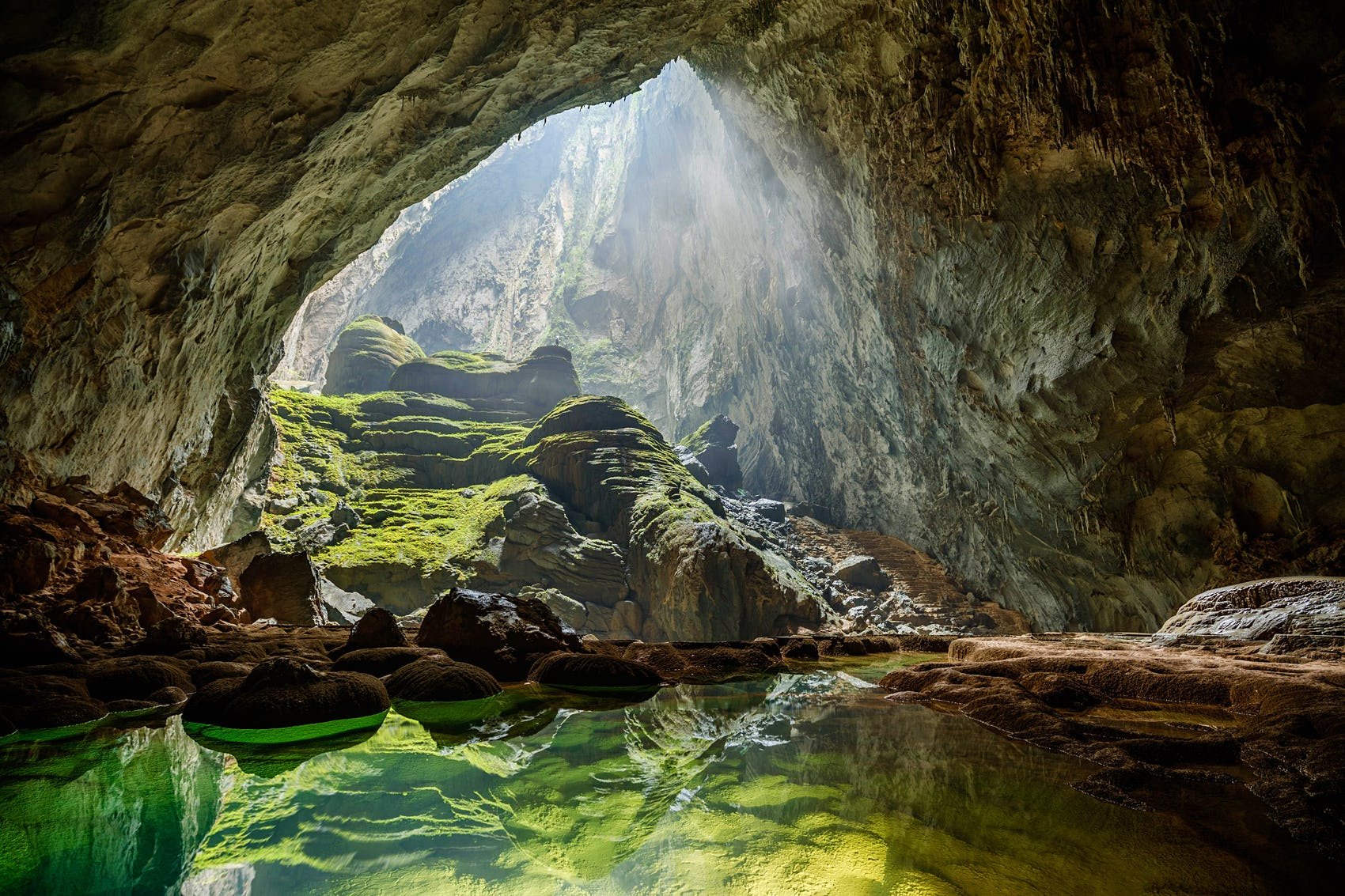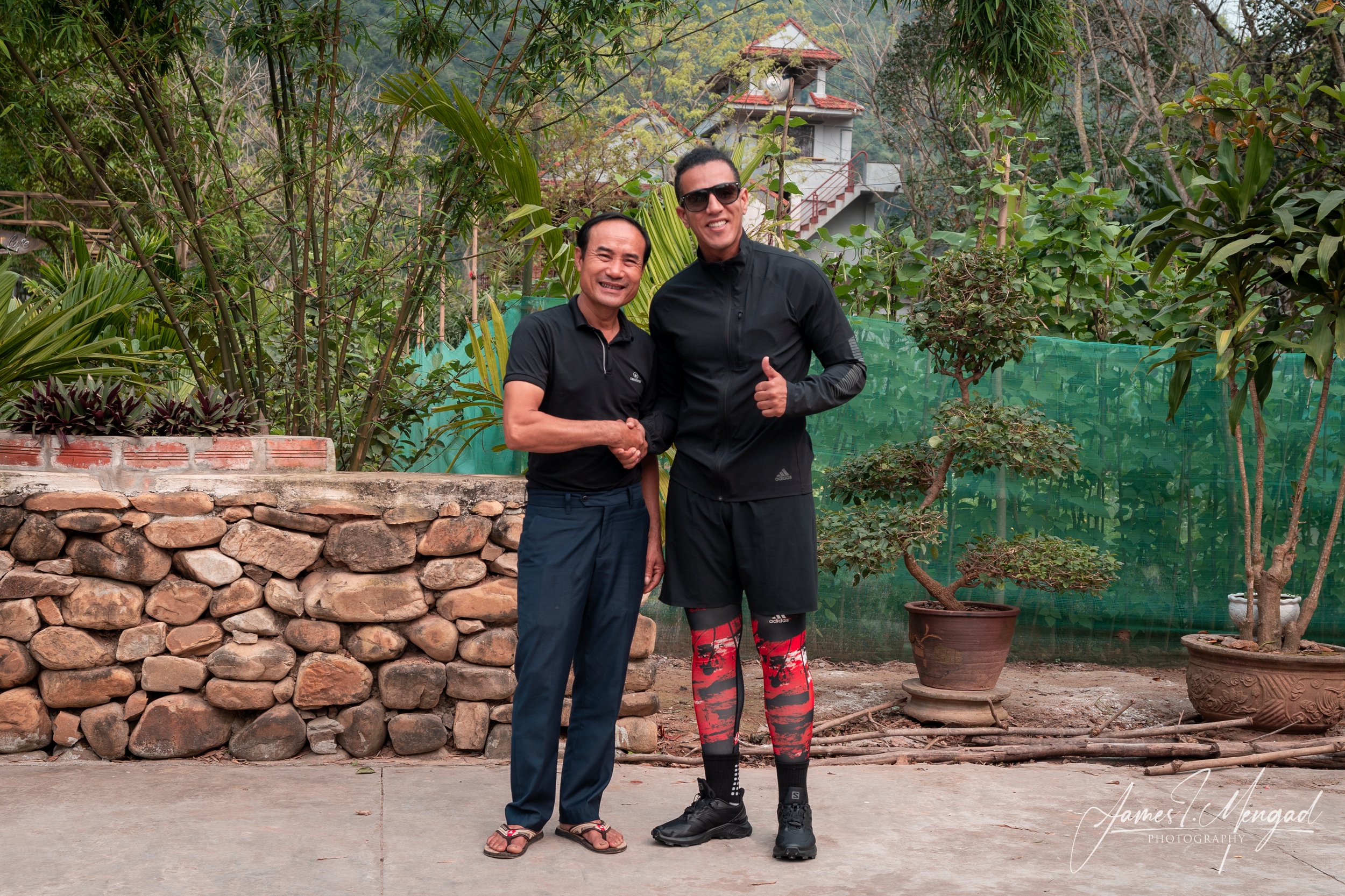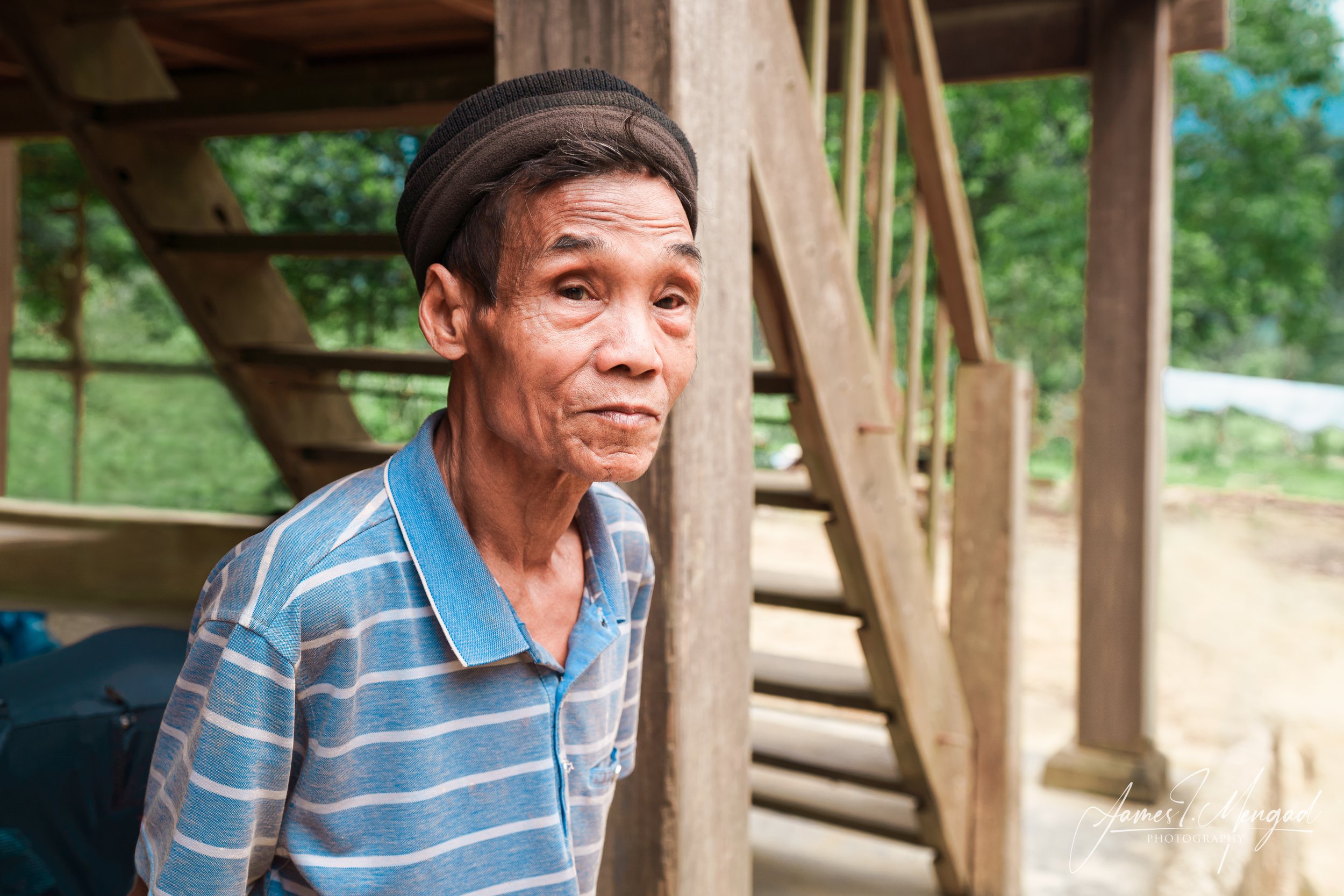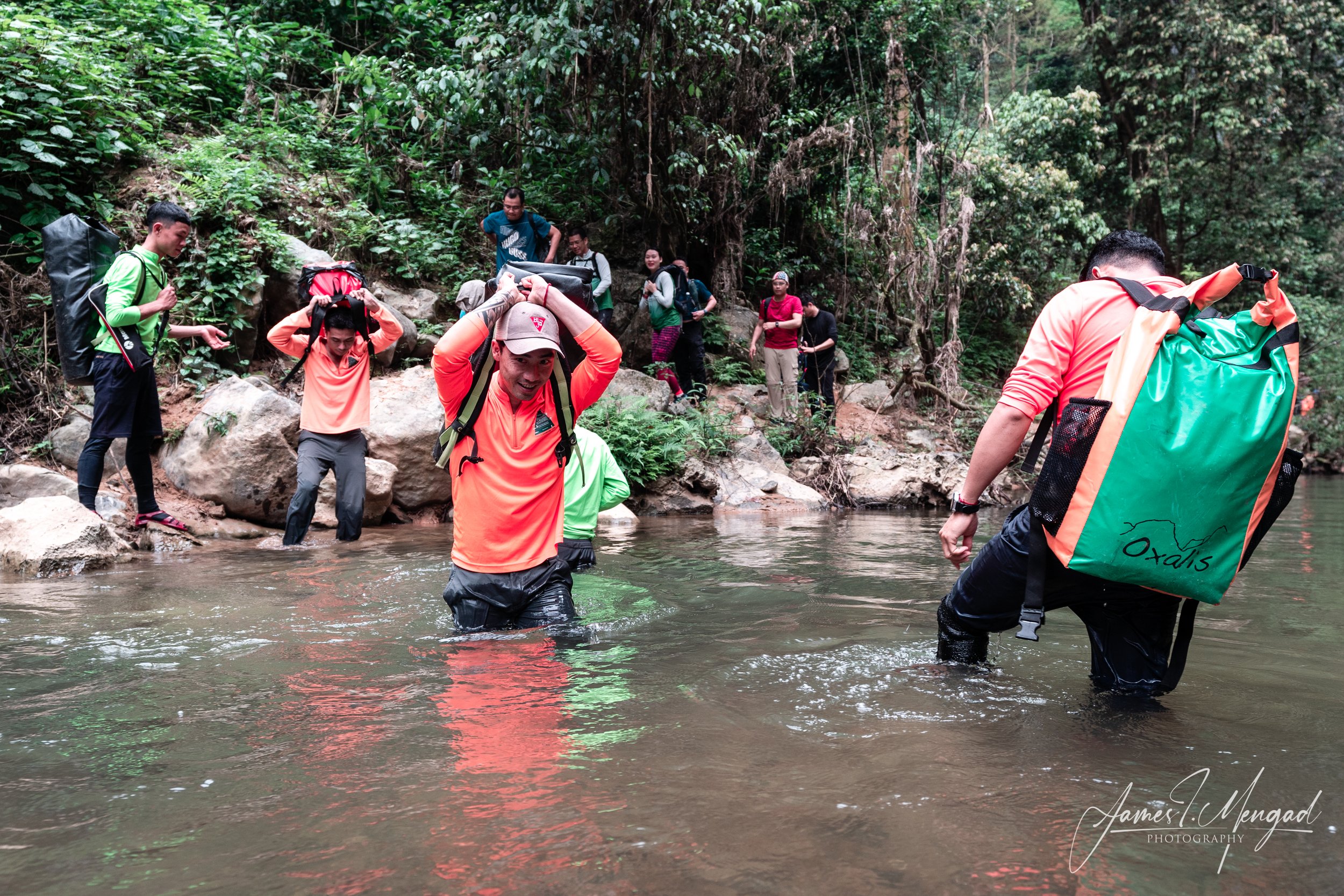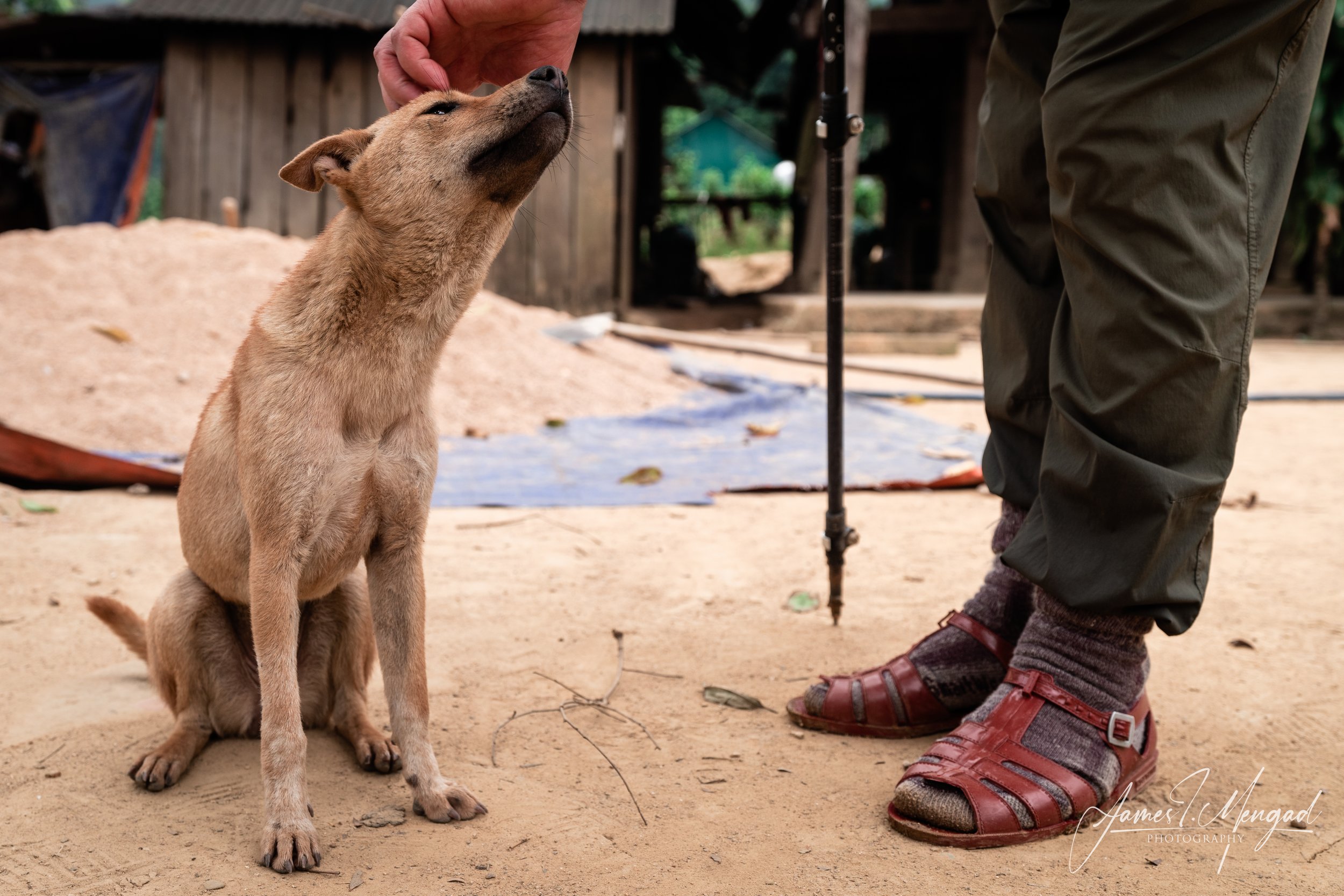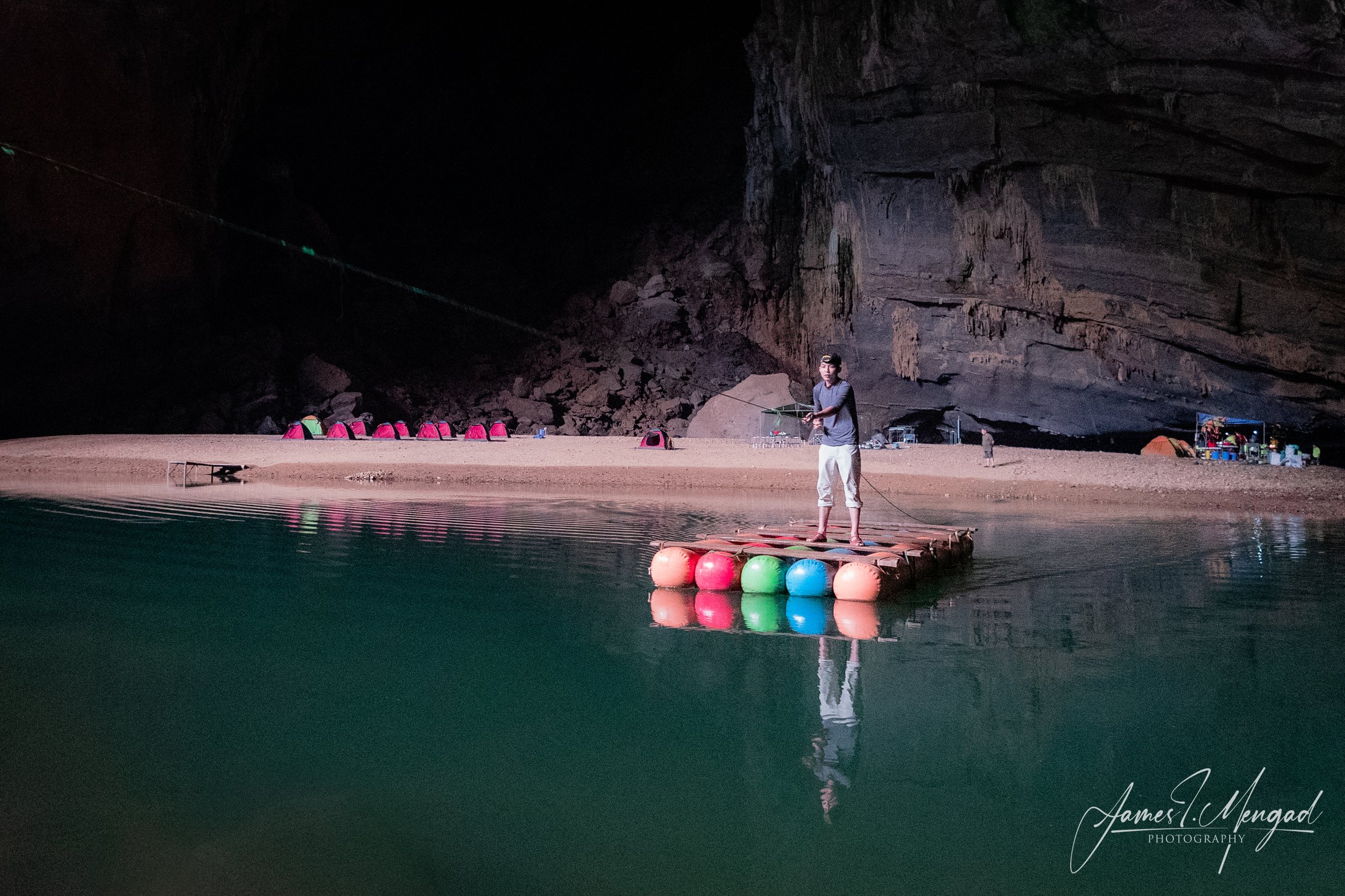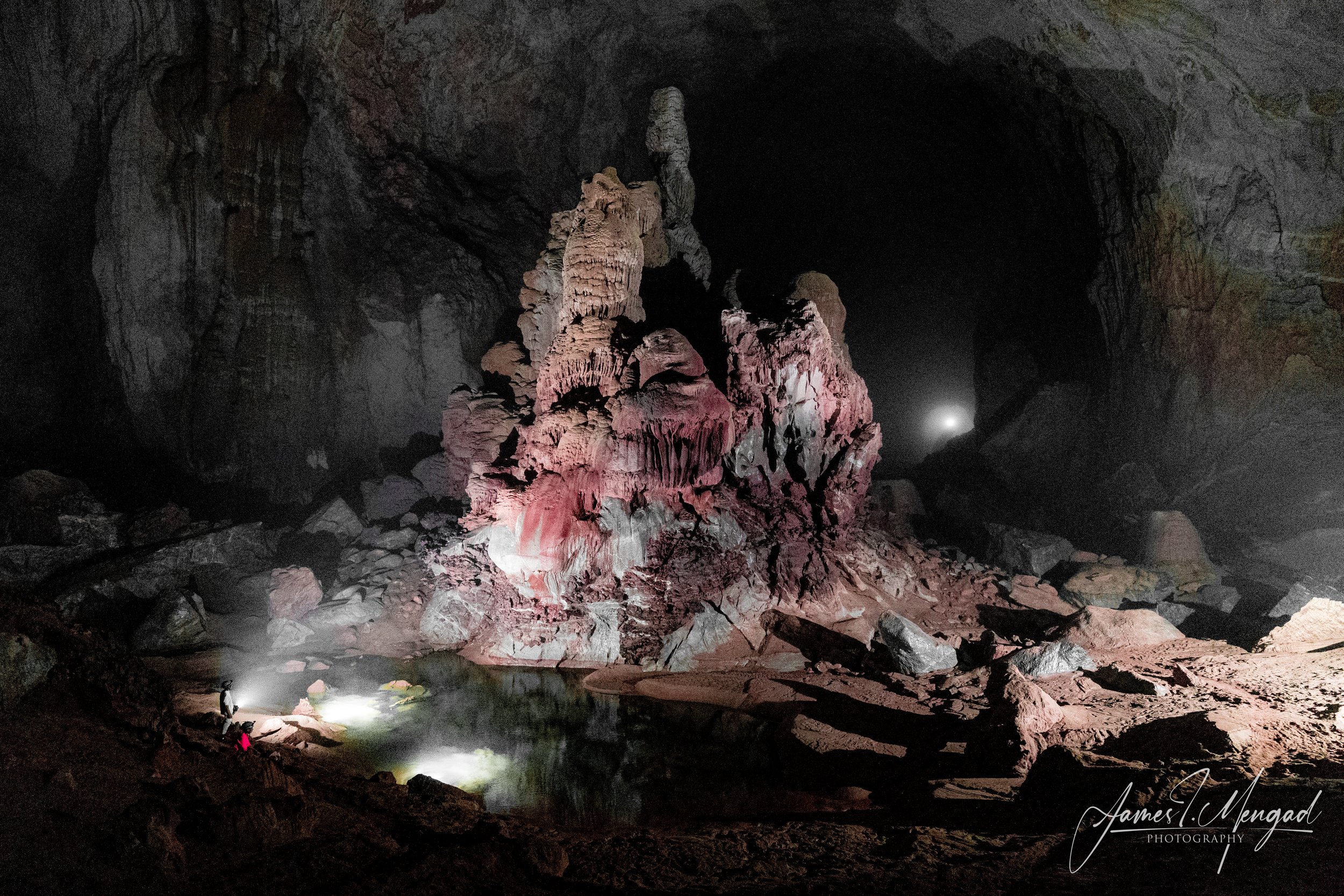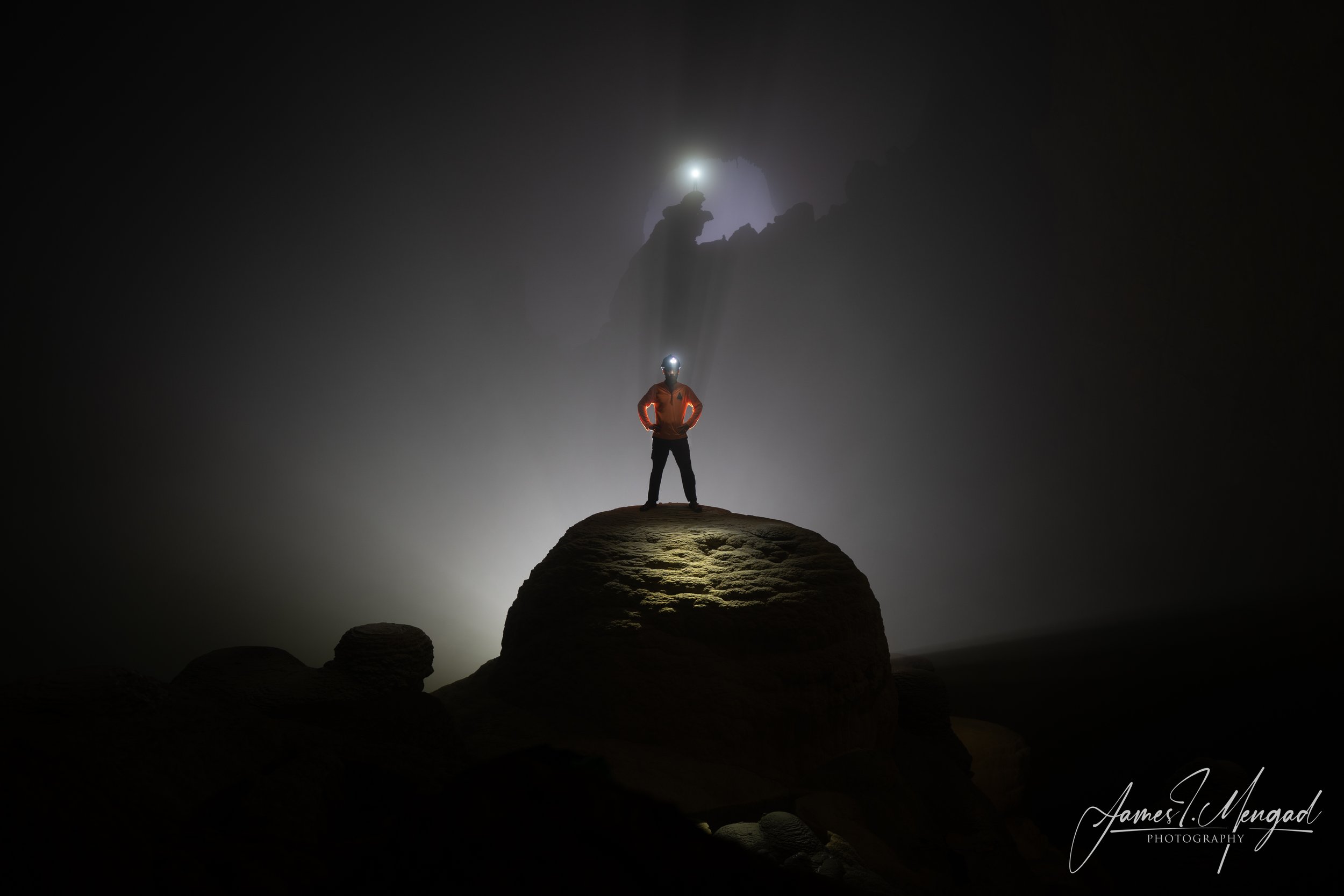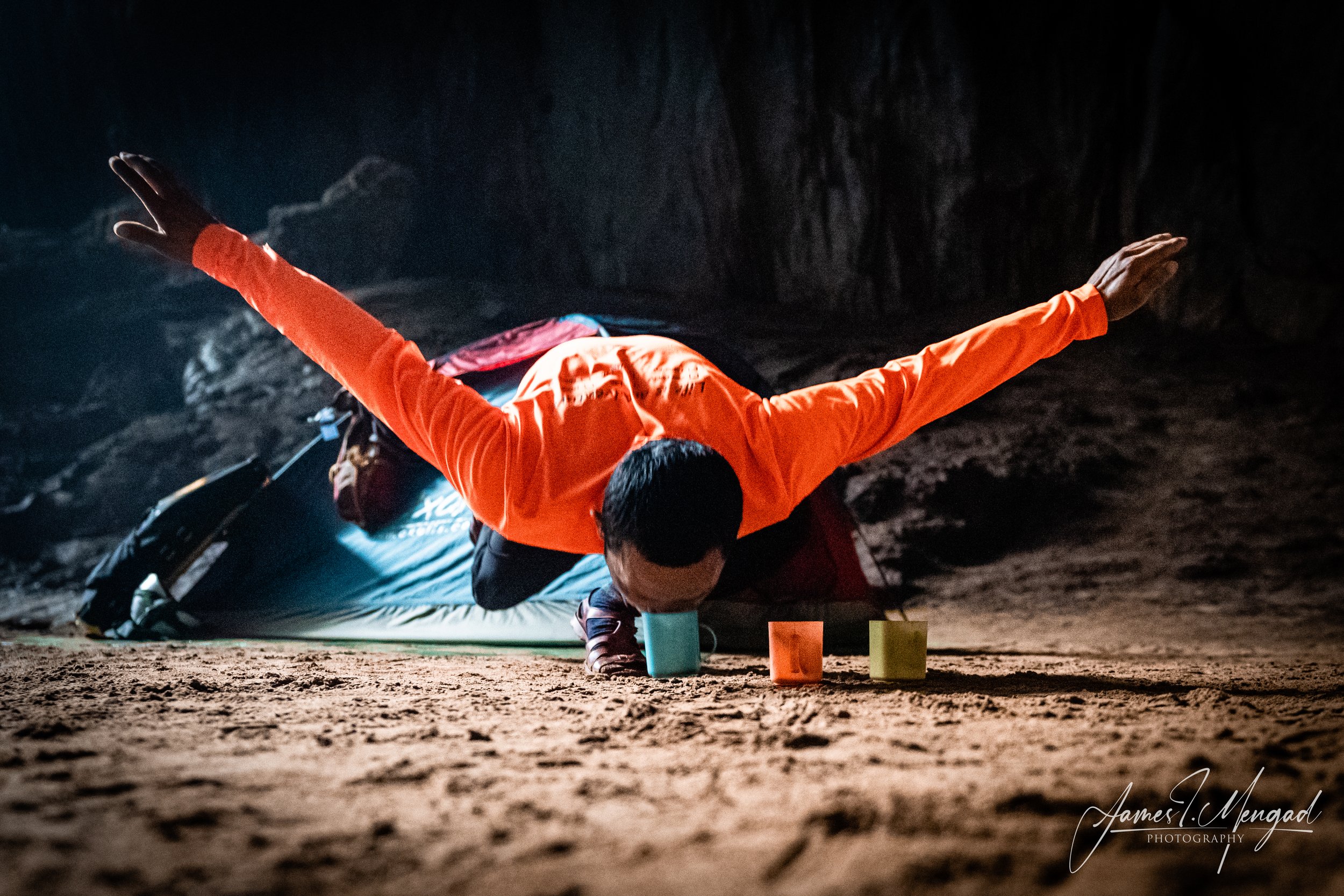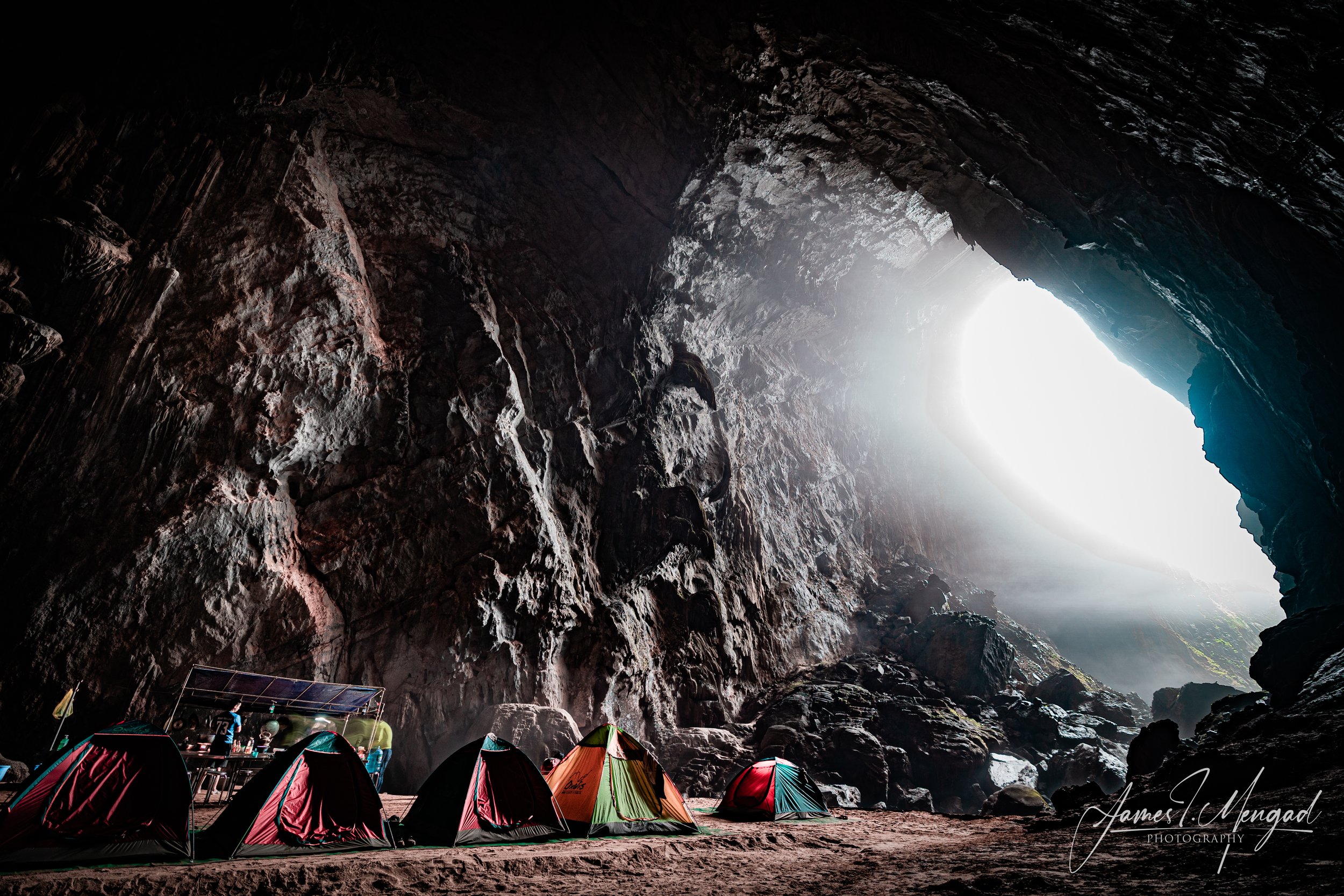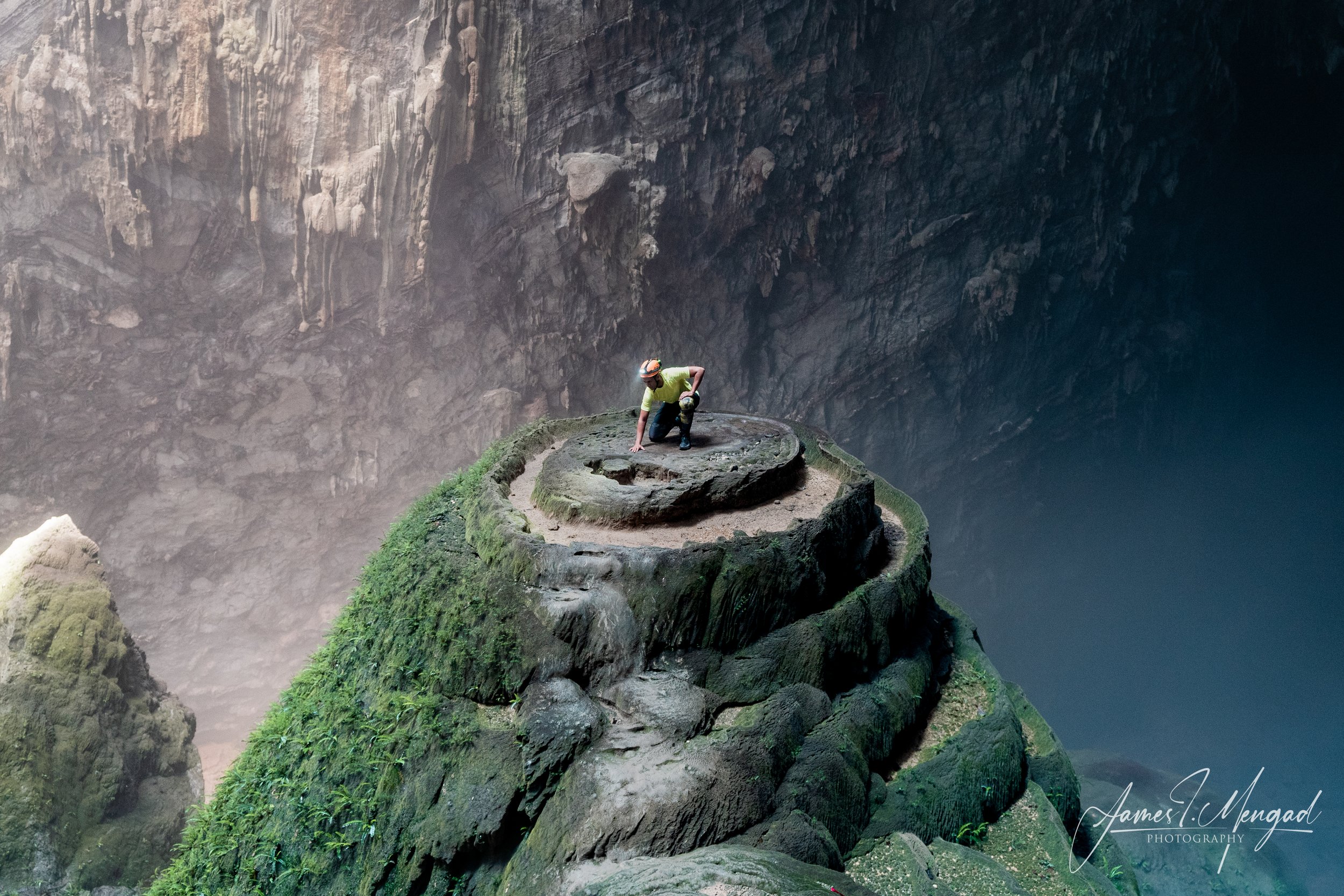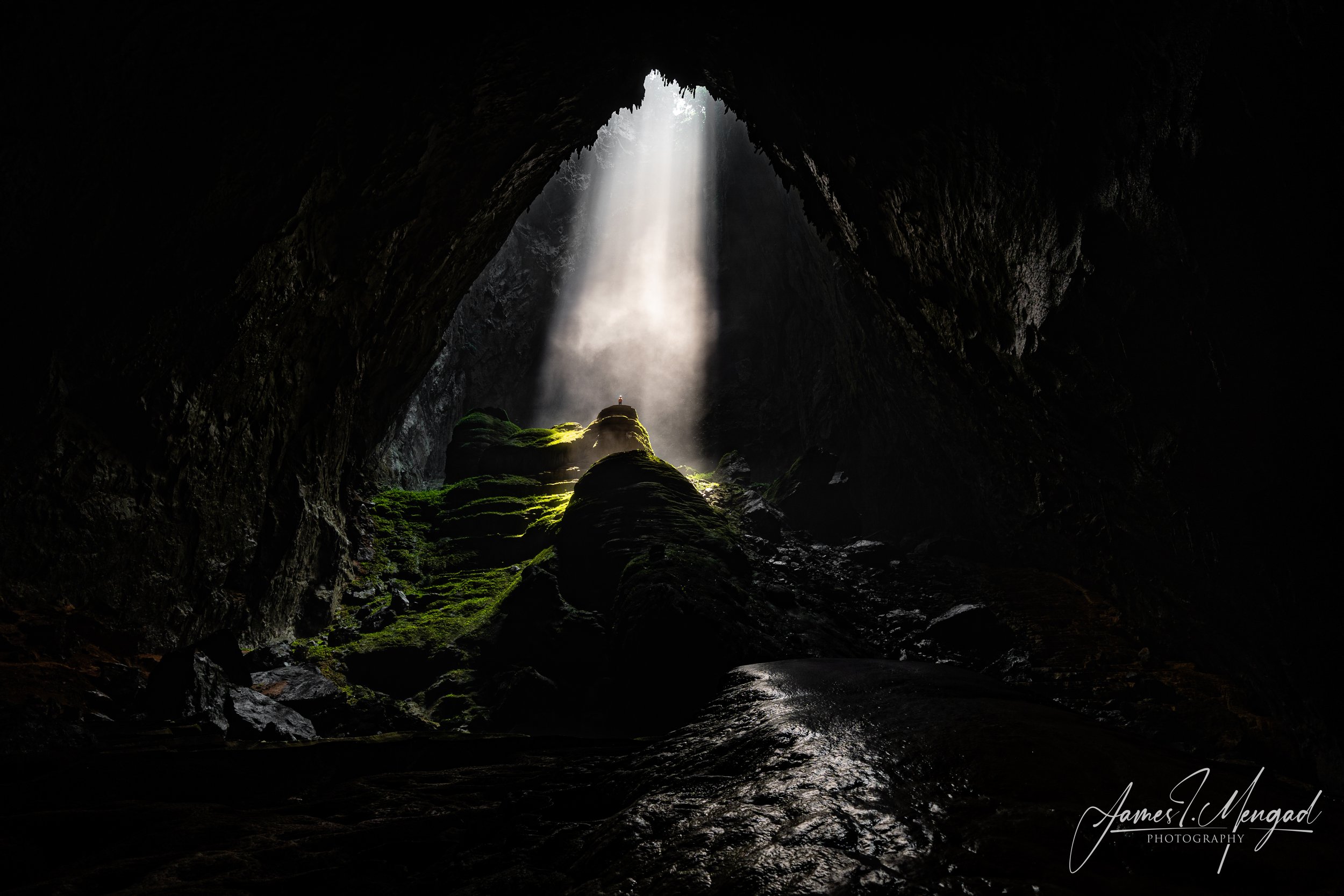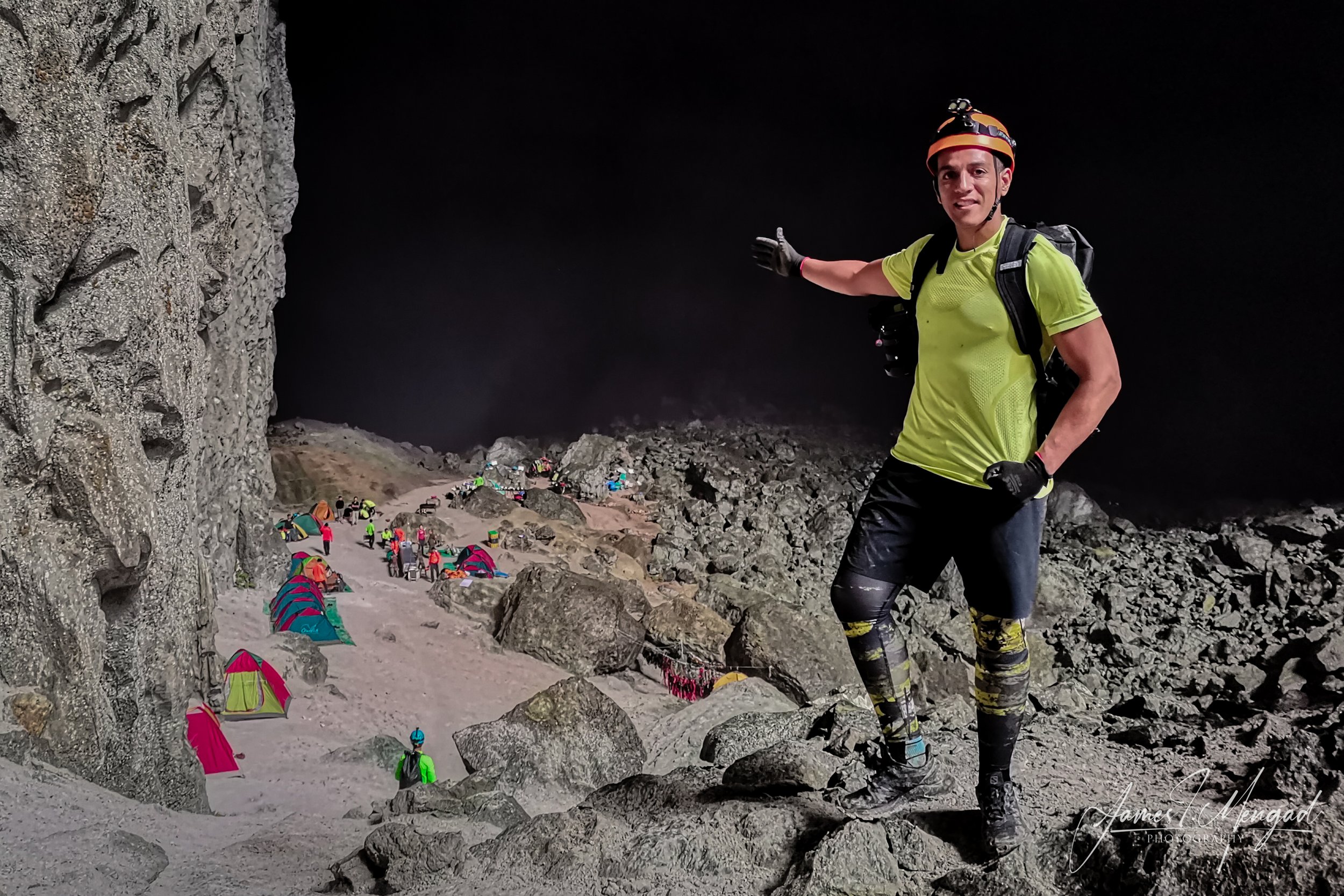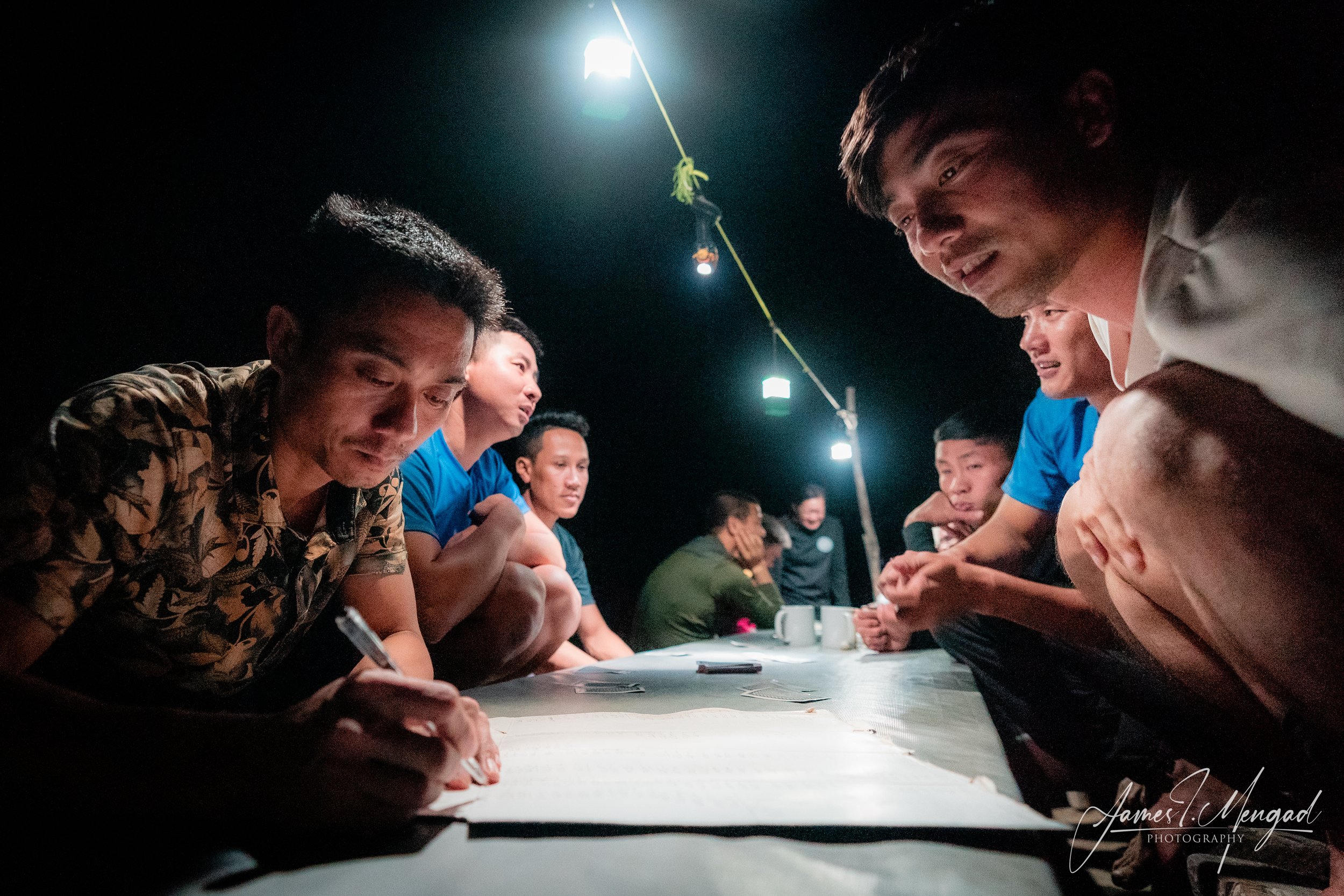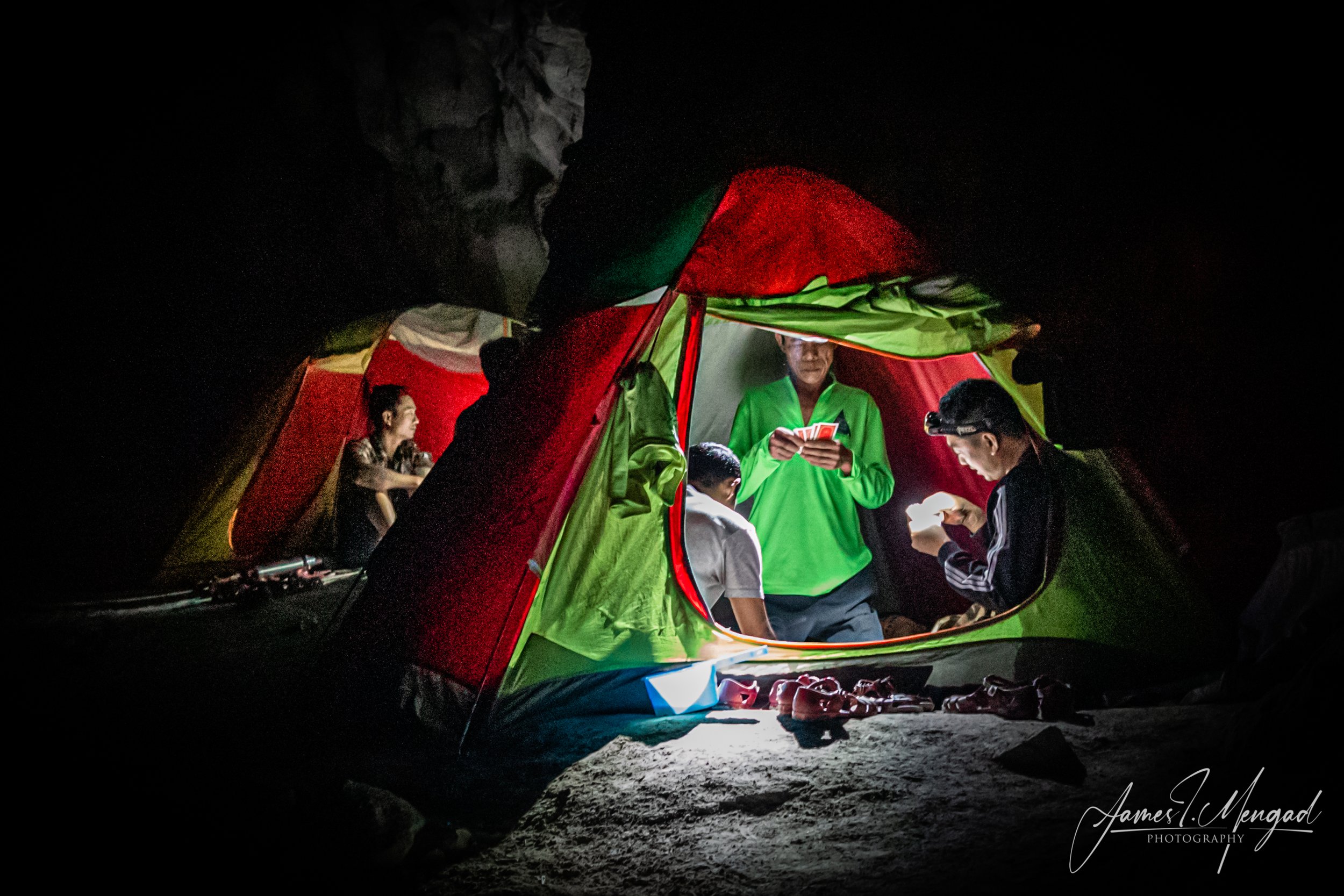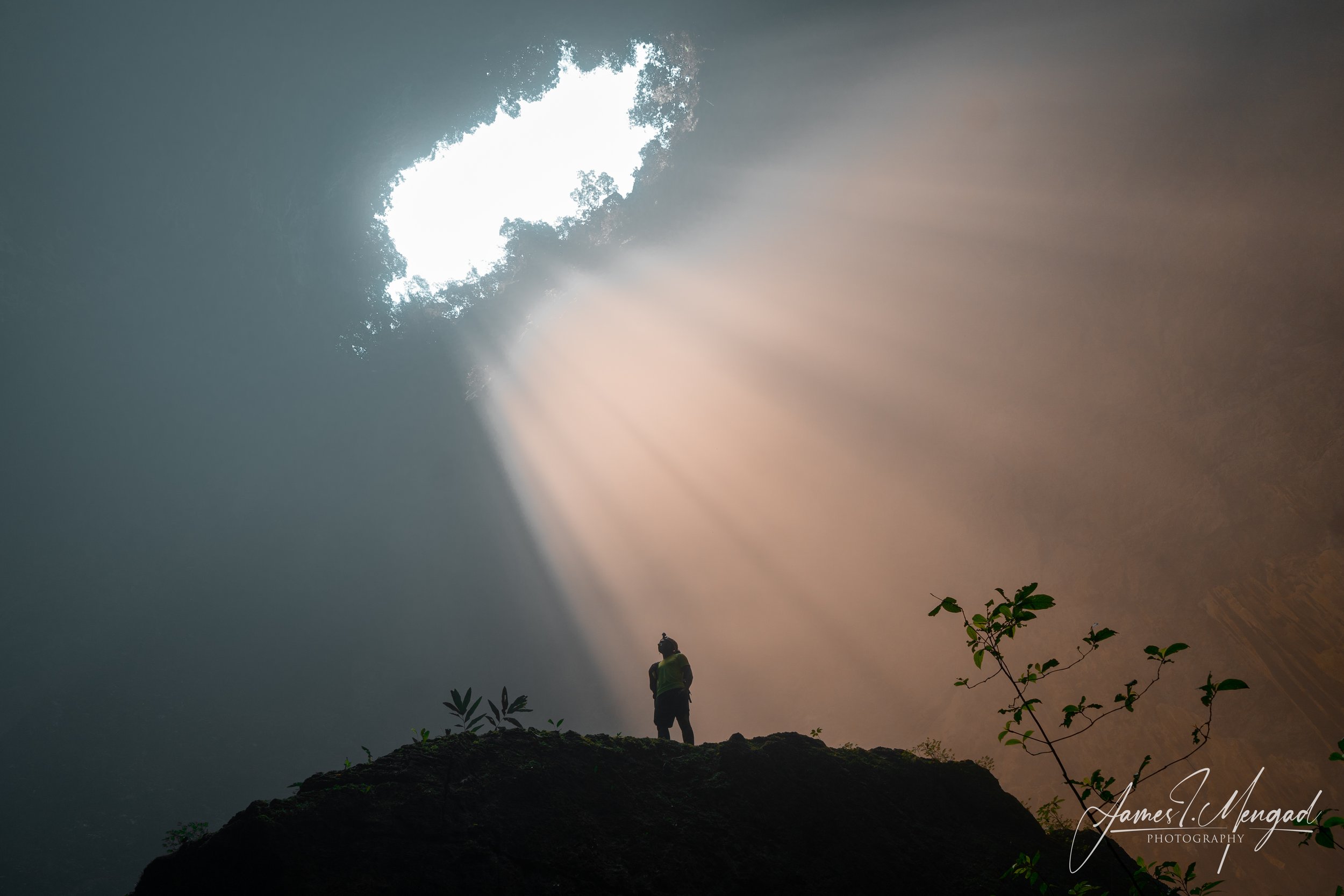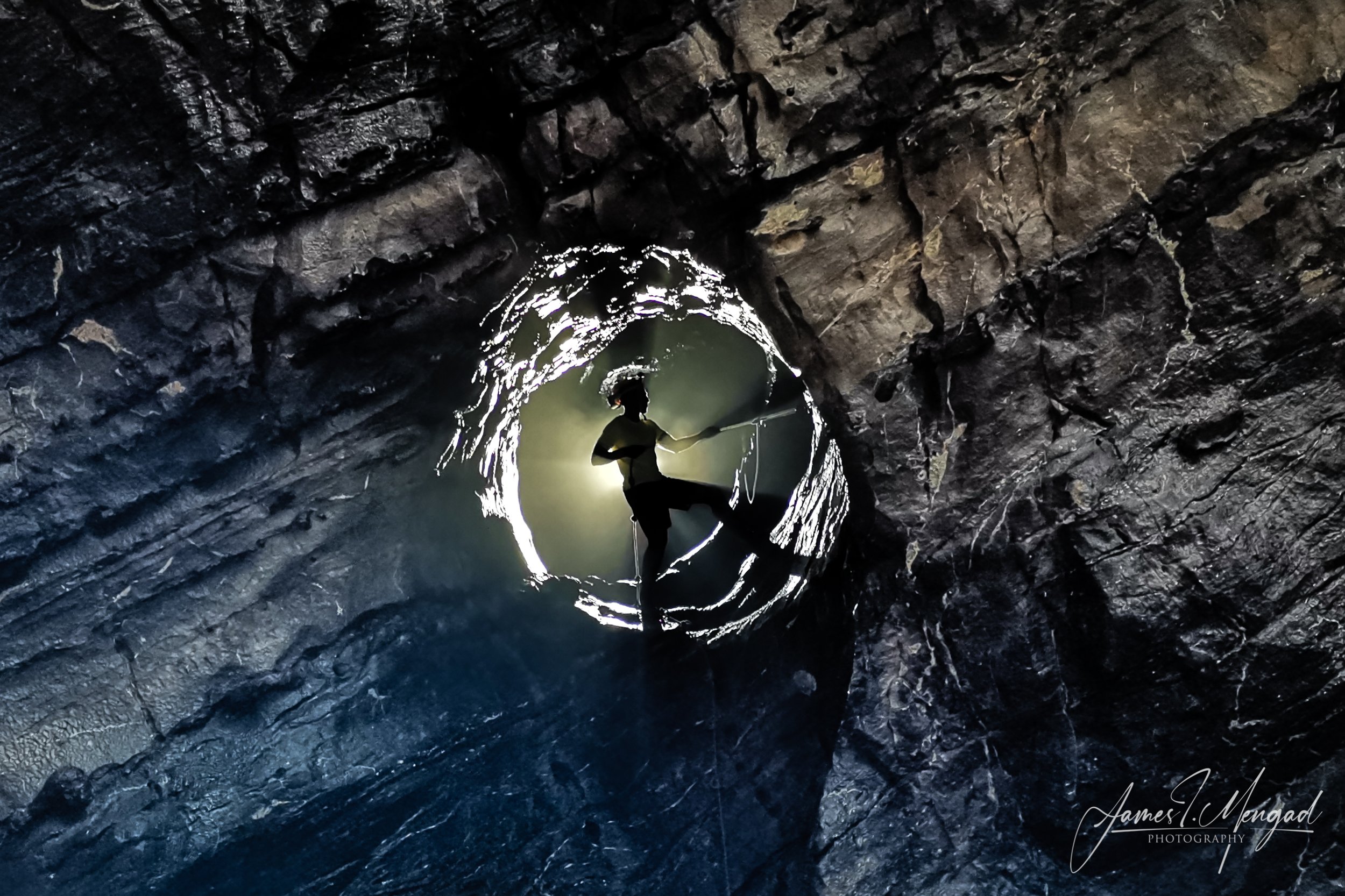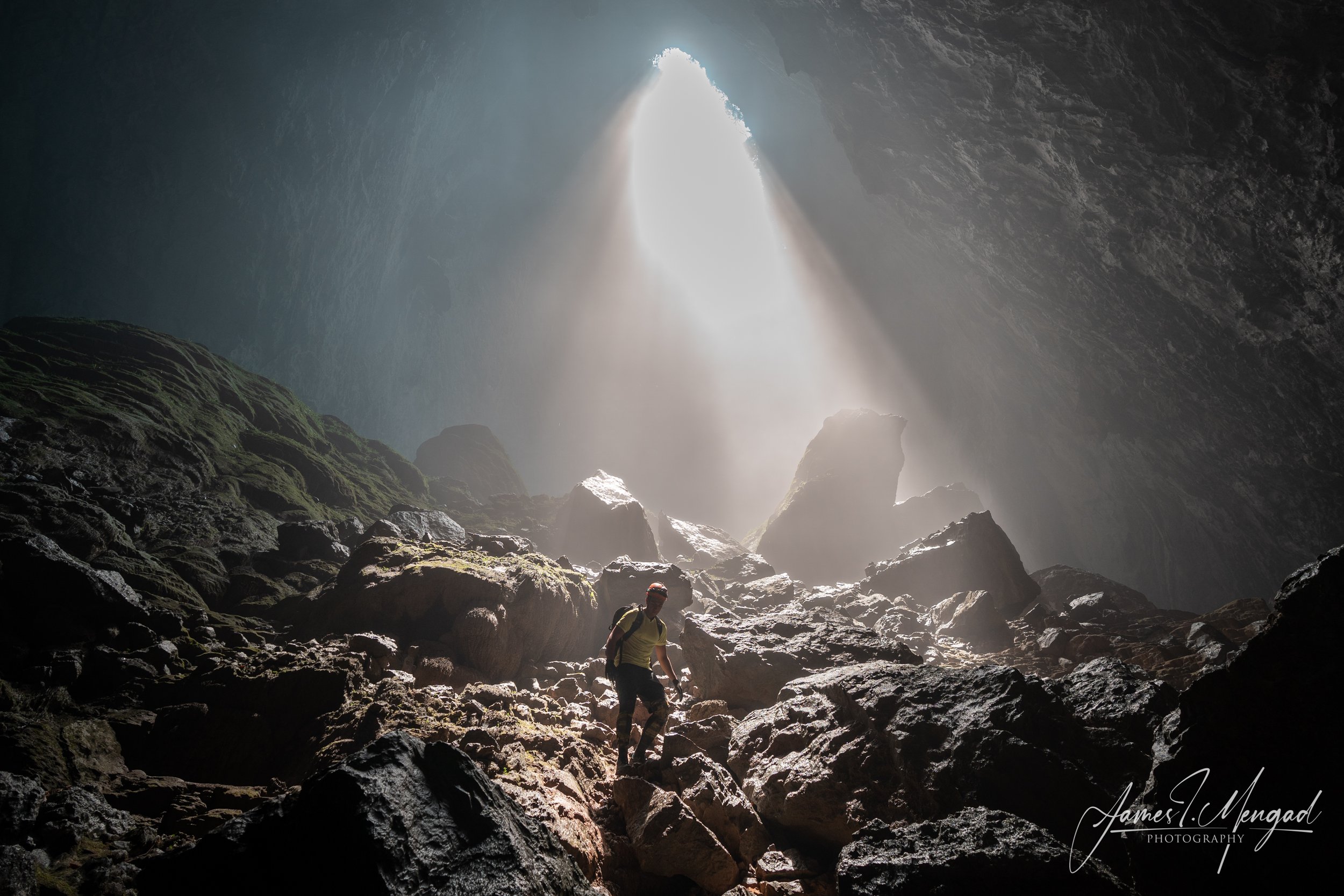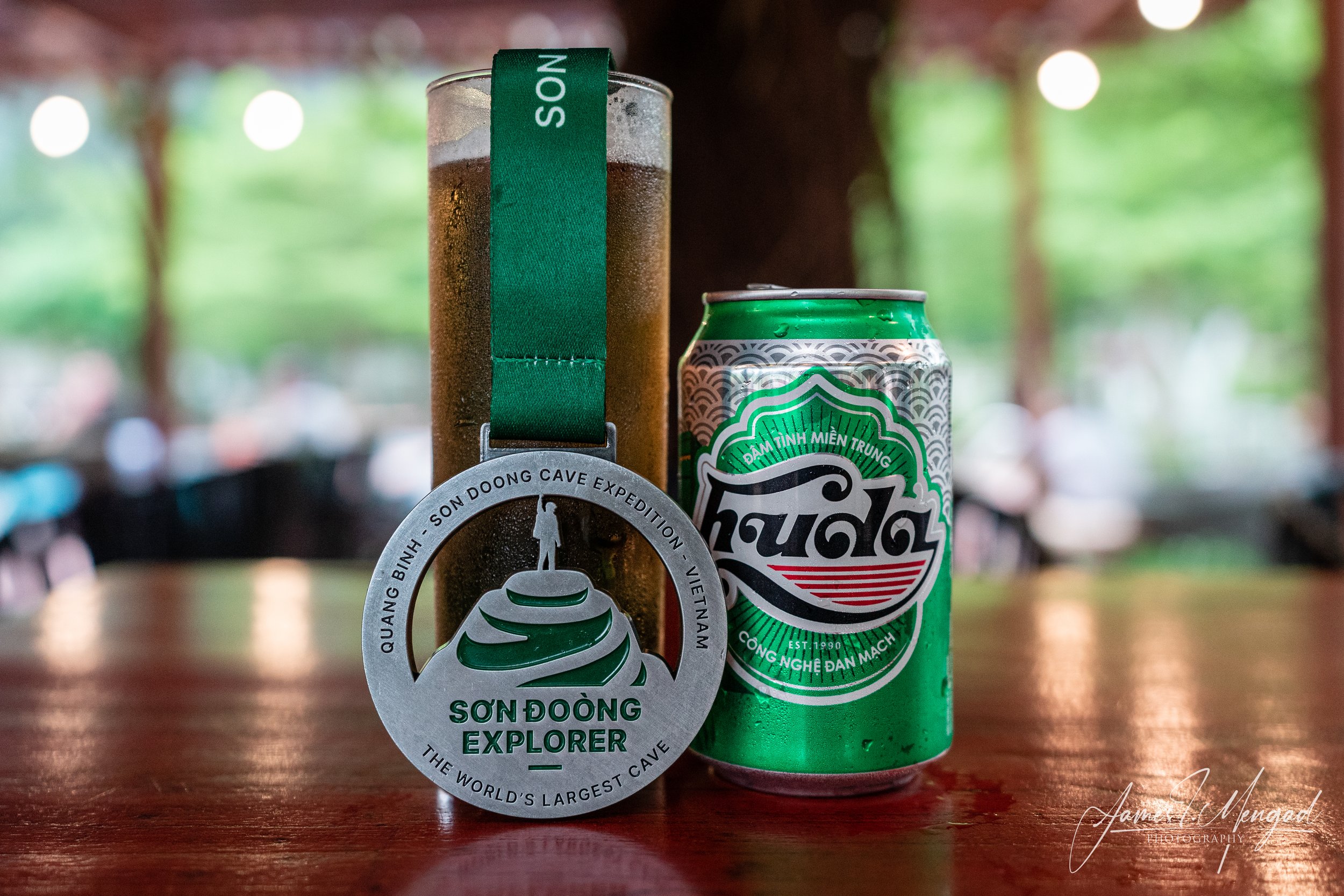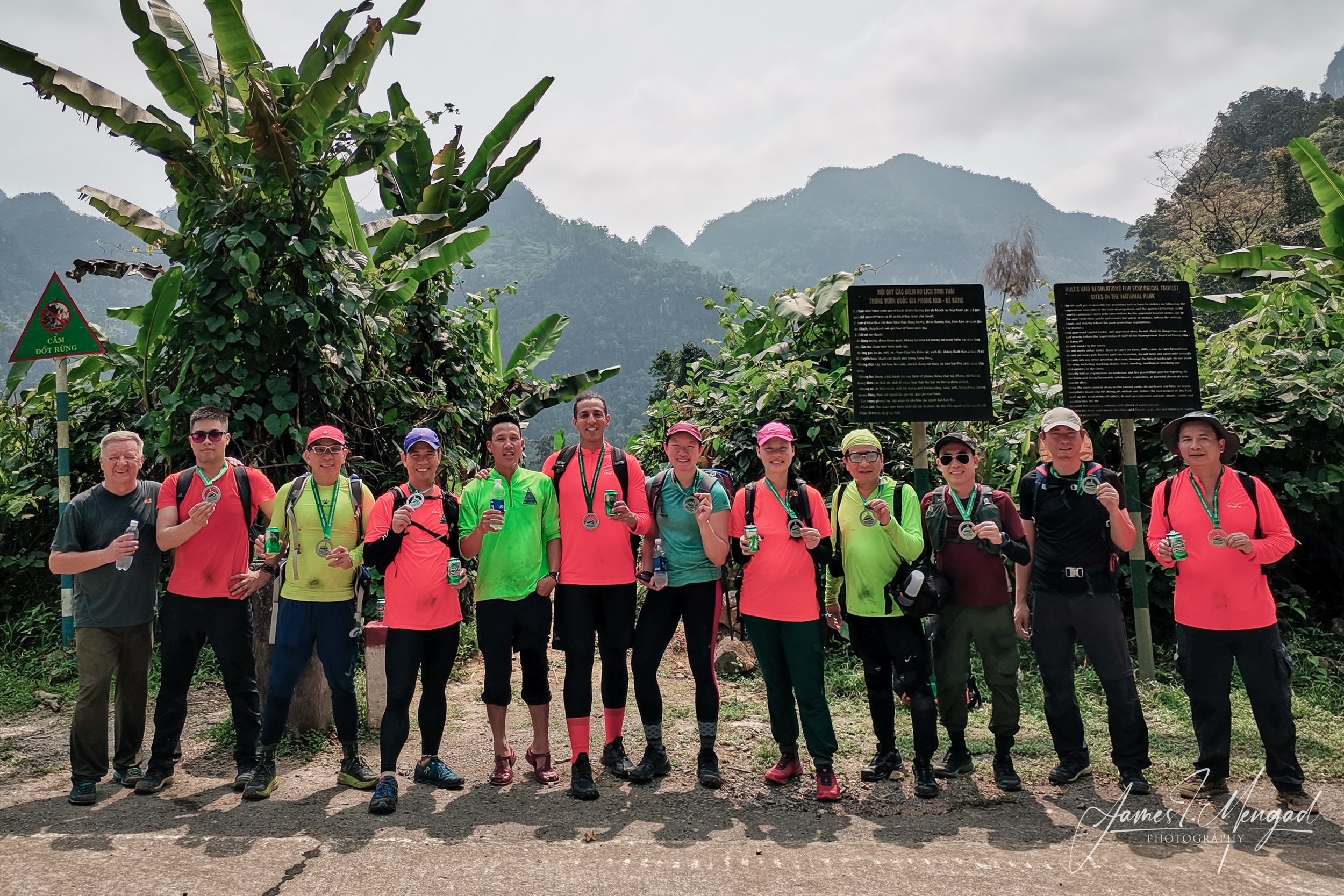HANG SON DOONG: THE WORLD'S LARGEST CAVE
So far unlucky with my 2021 travel plans due to COVID-19 outbreaks in certain Northern provinces of Vietnam - and with very little time left before my relocation to Indonesia - I decided to attempt an in extremis expedition to a bucket list item for adventure seekers and trekking lovers: an expedition to Hang Sơn Đoòng - The world's largest cave. The initial intent was to visit the cave with a few close friends. We reached out to Oxalis Adventure - the expedition's adventure company - through their Facebook Page. Out of luck, their tours were fully booked until June 2021. For the sake of preservation, Oxalis limits their amount of expeditions to one hundred (100) groups per year. They only operate during the dry season, defined in the Quang Binh province, between January and August. Outside of this window, the site becomes inoperable due to heavy water accumulation in the rainy season, sometimes reaching 180 millimetres per day, 28 days per month. Our guides have shown us evidence of water reaching nearly 100 meters high in a valley during the tour. It's mind-blowing to acknowledge how much it rains in the region. To make the experience even more exclusive, Oxalis often holds private expeditions for billionaires having no problem booking all spots - capped at ten (10) per expedition - just for themselves. As a result, the whole season often gets fully booked within minutes of the sales launch. Most people I know who have been to the cave had booked their tour one to two years in advance. While my friends went on and booked their tour for the end of June 2021, I immediately contacted the sales team at Oxalis Adventure in the hopes of finding one single spot available anywhere in March or April. No luck. All I could do was implore them to contact me as soon as a spot became available. Then, a miracle happened. A few days later, they reached out and shared the news that someone had just cancelled. Without hesitation, I jumped on the opportunity and booked the four-days-and-three-nights trek. This only provided me with very little time to prepare for the renowned challenging journey.
Welcome to Phong Nha
Two weeks later, I landed in Dong Hoi - the nearest airport from Phong Nha. Upon arrival, a driver sent from Oxalis Adventure waited at the arrival terminal with a sign, "Customer Sơn Đoòng." I couldn't possibly miss it. A wave and a nod were enough to confirm my check-in. We then waited for a couple who joined the tour and drove off to Phong Nha. The road was familiar from my previous expedition at Hang Tien in June 2020 - a memorable experience I was looking forward to repeating. It felt good to visit again the enchanting landscape made famous only 13 years ago with the discovery of the largest cave in the world - Hang Sơn Đoòng.
In contrast, last year was very difficult for the people of the Quang Binh province with excessive amounts of rain accumulated in the region, which resulted in massive flooding. From what I was told, The Quang Binh residents are pretty used to these weather situations, which forged their character over generations and made them highly resilient. Nevertheless, it was great to see that the region had recovered so quickly from this still recent natural disaster in the minds of many.
The driver brought us to the so-called Sơn Đoòng Homestay. A lot of businesses are named after the world-famous UNESCO World Heritage site. Around Phong Nha, you will notice many F&B companies utilizing "Phong Nha," "Sơn Đoòng," "Hang" ("Cave" in Vietnamese), "Ke Bang" (the name of the National Park where Hang Sơn Đoòng is located) or any other word in the same lexical field. But, one word you won't see is "cave." Why, you might ask? Because "Ca ve" is a Vietnamese word derived from French "Cavalière," which means female companionship. In other words, "ca ve" means nothing other than "prostitute."
We were still a few hours away from the initial briefing. What better way to enjoy Phong Nha than a nice bike ride by the river. I took a bike from the homestay reception and started pedalling. I checked if all pedals, gears, and brakes worked well as a true Westerner. Just as many things in Vietnam, the brakes didn't work at all for lack of maintenance. I mean… at all! When I pointed it out to the receptionist, he simply answered: "Ok, go slow.", accompanied with a lovely hand gesture indicating me to indeed ride slowly. Having suffered from a severe road bike accident in Germany back in 2016, there was no way that I would risk riding such a poorly maintained bike on a countryside road in the middle of nowhere. So, I passed on the bike and preferred to walk down the street with my camera in hand, searching for anything worth capturing. It was nearly 4:00 pm, and I still hadn't had lunch. Luckily, the road along the river is filled with restaurants next to each other. Or, is it that every house sells food to earn a few extra Dongs. I think the latter is more plausible, so why not encourage them? Besides, each of these restaurants features home food and a table with a beautiful view over the river and limestone hills. I placed a simple order of chicken and rice to one of the teenagers holding the counter and waited…ten (10), twenty, thirty, forty minutes for my plate to finally be served. Things are always slower in the countryside, to the image of a bike without brakes. But, food was delicious. I didn't have enough time to discover the surroundings as I expected and didn't capture anything interesting. But, who cares? I knew I was just about to visit the largest cave in the world. The following four (4) days would present many occasions to catch up on my photography and capture memorable sceneries.
Back at the homestay, I sat by the swimming pool to enjoy the fresh air. A man by the name of Cuong was the first one from the expedition group to greet me:
-"Are you here for the Sơn Đoòng expedition?" he asked. "
-"I sure am!" I replied.
-"My name (is) Cuong. I am here with 6 of my friends."
-"Oh, you all know each other in the group?"
-"Yes, we are long-time friends. Five (5) of us live in Hanoi, and another with his wife live in Saigon."
-"Oh, I think they were on the same flight. We shared the transportation from the airport together."
-"Yes, that's them!"
The quinquagenarian, who recently retired from being a Samsung factory General Manager, is now operating a bed & breakfast near the Hanoi airport. Although a bit of age, the whole group seemed pretty fit. It was evident that they wouldn't struggle at all through this four-days-and-three-nights adventure. It wasn't their first rodeo! Participant #9 was Esther, a Singaporean bureaucrat working at the Embassy in Hanoi. It was shocking to me how proficient she was in Vietnamese after only one year of living here. Last but not least, Participant #10 was Phung, a man who had just finished the Hang Va expedition (2 days, 1 night) and decided to fill the last-minute cancellation spot.
About an hour before the briefing, we were all handed a transparent waterproof plastic bag and asked to prepare our backpacks for Day 1 of the expedition. The plastic bag should contain all the items we won't need until we reach Base Camp #1. Only keep the essential things we need during the trek in our personal day pack. At 5:30 pm, we all met at the lobby area for plastic bag collection and trekking shoe inspection. All seemed to be in order with my new footwear with extra grip. At 6:00 pm, we left the homestay to the Oxalis head office for the pre-expedition briefing session. The eight (8) Vietnamese sat around a table with Hieu - our guide - for a briefing in the local language, while the two (2) foreigners in the group joined an Anthony Hopkins look-alike - sixty-something Yorkshireman living in Vietnam for the past 30 years - for a briefing in English. It took half a second for him to mention that he would be joining the tour. At first, I thought he was joking, but it turns out the Englishman is quite the real deal. I admit that I judged a book by its cover, allowing myself to be fooled by his age and heavy belly. In reality, the man is fitter than the whole group combined. He had no problem going up and down the cave to ensure everything was ready when it needed to be. In fact, the man in question - Howard Limbert - is a world-renowned cave explorer countlessly mentioned in several documentaries and magazines, including National Geographic. The humble man with loads of knowledge and experience was definitely the Papa Smurf of the expedition.
THE LEGEND OF Hồ Khanh
Hang Sơn Đoòng was first discovered by Hồ Khanh a Phong Nha local resident experienced with jungle treks. In the late eighties, the region was impoverished and desperate for food. It was common practice for local people to go on journeys in the jungle in the hopes of finding game meat to feed their families. With that purpose, Hồ Khanh went on a quest into the wilderness. After a few days, he was caught by heavy rain and had to find shelter imminently. Without knowing what he had discovered, he ended up using - as a refuge for the night - what is today known as the entrance to Hang Sơn Đoòng. Although, he did have the presentiment that this was more than a small cave, as he could hear hollow sounds and river flows echoing from deep down up to the entrance. Without enough food supplies and proper equipment, he couldn't explore any further and had to get back to civilization. For nearly 20 years, Hồ Khanh attempted several times to retrieve the far-from-obvious entrance to the cave but in vain, until Howard arrived at Phong Nha like a messiah in Nazareth. Having explored nearly 500 known caves in the region famous for its limestone geology, Limbert asked Khánh if he knew any large cave in the surroundings. A question to which he answered that he suspected to have found an enormous cave carved within the limestone sediments deep into the jungle but had failed to retrieve it for too much time had passed since he stumbled upon it. Limbert made it his mission to find the path that was long forgotten. This time, Khánh was determined to go to the end of his quest and find out how deep this cave was. It took the tandem of pioneers many attempts to find the entrance, but they finally succeeded in 2009. It took them many ins and outs to eventually go through the entire cave that lengths around 10 km in total. All of this with rudimentary equipment, thanks to Limbert's cave exploration expertise. I couldn't help but make an obvious parallel with the Lord of the Rings throughout the expedition. While talking to my family, I might have mentioned that I was on a quest to the Mountain of Doom to destroy the Ring. I mean, ten (10) people joining a four-day quest to the underworld led by a short man from the (York)Shire. I mean, come on!
THE HANG Sơn Đoòng CAVE EXPEDITION
The following day, the whole group was wide awake around 7:00 am, and ready way ahead of the 9:00 am departure time. Howard later admitted that he anticipated another lazy group that would show up late. Turns out he was pleasantly surprised with our arrival at 9:05 am. He couldn't believe it but understood right away that this wouldn't be the business as usual his company has been coping with at every expedition. Indeed, every day the group showed great discipline with an early wake-up and on-time departure. The bus briefly stopped at the Ke Bang National Park entrance to hand over the participants manifest and pay the due entrance fees. One of the reasons this particular expedition is so expensive is that Oxalis must pay taxes of 700 USD directly to the local authorities for each person trekking through Hang Sơn Đoòng.
DAY 1: Reaching Hang En
And, so we began our Journey to the Center of the Earth. The first leg of the expedition consisted of getting to Hang En, the 3rd largest cave in the world - also available for trekking on a separate tour. The bus dropped us on the side of the road, near an access point to the jungle. Shortly before starting the trek, Hieu - our tour guide - invites us to use the "natural" toilets. "Men to the left, women to the right.", he said. In other words, pick a tree and do your business. In the first hundred meters into the jungle, some group members had already stopped to take photos. Among the group, one person, in particular, was excessively interested in documenting his adventure to the point where it was perhaps too much. I'm talking about posing with a cigarette in his mouth, with coffee in his hands, behind the kitchen counter - as if he cooked anything during the trek. It was all fake! Who am I to judge a man by his grammables, right? However, authenticity is a must while reporting on your journey, Jules Verne would say. Through the trek, we kept on repeating, "Gotta do it for the gram!" just to mock him a little. At the first river crossing, some of the group members were cautious about keeping their feet dry, a behaviour to which our very own Bilbo Baggins simply said, "We will be crossing that river 20 times today. You're going to get wet up to the waist anyway. Might as well get it out of the way now!"
We must have hiked about three (3) hours through the park, including the expected several river crossings, before reaching the small ethnic community village by the name of Ban Doong. Evidently, there is still a "Gallic Village" of about 40 people living in the National Park and resisting relocation. The Bru Van Kieu community leader generously greeted us under his humble log home to enjoy the lunch the porters had prepared. While waiting for food to be served, why not try out the rudimentary porter backpacks made out of rice bags and cords. It amused me to notice the basic gear the guides and porters trekked with while the Oxalis Adventure website clearly emphasizes being equipped professionally. Meanwhile, the staff trekked with nothing more than rubber sandals and not even socks to go along with. According to them, there is no expensive trekking shoe that can match the grip of these rudimentary rubber sandals. I'll take their word for it but pass on the sockless rubber rubbing against my feet.
After about 10 km, we finally reached Hang En - where we will spend our first night. However, we are not quite there yet, as there is still 30-minute inside the cave to finally reach the campsite. We were asked to wear our safety helmets and turn on our headlights at the entrance. And so we began the final stretch of Day 1 while climbing up a rocky path until we reached a high point - nowhere far from the cave exit - where we had a view from above over the campsite that was already prepared by the porters. A few pictures were taken from different angles until we descended to the camp level. The day's final step was to cross the underground river with a raft made out of Jerry cans by pulling on a rope until we docked on the beach. We spent the late afternoon swimming in the freezing river to the sound of swifts flying in and out of the cave. Finally clean from a day's worth of sweating, we could change to warm and comfortable garments to enjoy the dinner under a tent lit up by a few headlights. After dinner, one more photoshoot took place using different lights and a lighting technique that I ignored until that day called "light painting." The method consists of lighting a subject, inch by inch, using a flashlight over a long-exposure shot. Shortly after the session, it was time to call it a day and get some rest for a physically demanding Day 2.
Day 2: Reaching the Fossil Passage
An early wake-up call to the sound of swifts singing at the cave's exit surely kickstarted Day 2 on the right foot. The second day consisted of trekking through the Hang En cave and through the jungle until we reached the main highlights of Hang Sơn Đoòng: Hope and Vision, The Hand of Dog, and Fossil Passage. After breakfast, we initiated our climb out of Hang En to find ourselves in the inner part of the jungle between Hang En and Hang Son Doong. Right out of the cave, we crossed a stream, submerging ourselves up to the waist. We had to carry our bags (and camera) point-blank with our hands up in the air. Luckily, there were no damaged goods. A perfectly circular hole in a rock called for a bit of challenge. Each of us had to throw a pebble straight into the hole before being granted the right to continue. We took a short stop to clean our shoes off the mud accumulated from the several river crossings and reached the station to have lunch meters away from the Hang Son Doong entrance. I have to side with Hồ Khanh and Howard Limbert on this one. That cave entrance is anything but obvious!
Entering the cave is quite tricky. We first have to climb down 80 meters with a rope. We can only go one at a time, so we hung out near Hồ Khanh’s writing until they called us one by one. When my turn finally came, I climbed up the three-meter-high ladder before climbing down again for a few meters. A safety assistant buckled me up before climbing down with a rope. You would think that the main focus would be to bring me down safely, but it seems that Vietnamese people can constantly multitask when it comes to taking photos. They made me hold my position in rappel for about 3 minutes until they took the perfect shot. At that point, my arms and legs are shaking from holding too long, but the photo they took for me is pretty awesome! Down the rope was an ice-cold stream we crossed, holding another rope, horizontal this time. The stream was quite strong that holding on to the rope was necessary if you didn't want to be washed away. We walked around the so-called Hand of Dog and climbed some more through the sharp rocks to finally reach Basecamp #2 for our first night in the world's largest cave. Once again, the view over the camp was breathtaking.
Before dinner, why not bathe into the ice-cold stream we had crossed earlier. It took some courage to accept the thermal shock, but it sure felt refreshing after a day's worth of trek into Mother Earth's womb. One thing's for sure, there was no way anyone would skip on washing their sweat today. I found my tent with my personal bag already placed inside by the porters. I'm telling you, this trip is first class. As a customer, you don't have to do anything except worry about your safety and enjoy the beauty of Mother Nature. As it got chilly in the cave, I changed into warm clothes for the evening, and I sat at the dinner table to talk with Howard. He had some pretty frightening stories about these damned Sun Group - the tourism exploitation company - threatening to build a cable car into the UNESCO-listed world's largest cave to open up to mass tourism. This is not the first time Sun Group has attempted to ruin Vietnam's natural beauty with a distasteful extravaganza. In fact, they have already succeeded more than once with Phu Quoc, Ba Na Hills, and Fansipan, to name a few. This time, they planned to inject 212 million USD into the Quang Binh province to build a 10.6 km-long cable car system through the national park and the supporting tourism, services, and resort complex to ensure the park gets screwed real good. After dinner, we went directly to sleep while I tried not to make nightmares, thanks to Howard's rated-R bedtime story.
Day 3: Reaching the Garden of Edam
The morning kicked off with the guides and porters playing a little game. They all put a few bills in a cup and placed them on the ground. Whoever would be able to bend forward while keeping their balance on one leg and pick the cup with their mouth without falling would win the pot. It was entertaining to watch. I couldn't possibly be that flexible even in my wildest dreams.
While waiting for breakfast to be served, why not line up for a chain of mutually-administered back massages. Then, our very own "influencer" went behind the camp stove for a mock-cooking photoshoot. After the breakfast he certainly didn't cook, we were all set to go. But first, let us take some photos. A designated tunnel with marks of sediments created by a stream flowing during the rainy season makes for the perfect replica of a classic Bond movie opening credits. A few kilometres further, we reached the Green Gours, featuring a tall structure in the shape that most visitors would compare to a wedding cake or wheels of cheese of different sizes stacked over each other.
We stopped for lunch right down the Green Gours, where I took another great shot of the so-called wedding cake enlightened by the 12:00 pm sunbeam and reflecting into the pond at my feet. This was definitely my favourite part of the adventure, and it was for many others who had to take part in the same trek. Indeed, Howard confirmed it's a pretty popular section among every group he's guided. I can understand why. Through the cave and out at the Garden of Edam, we finally reached our last campsite of the trip: Basecamp #3. At this point, it became very normal to sleep in a tent inside a cave. Who would have thought that I'd ever say that? Next to the campsite was an erected sediment that looked slightly too familiar. What did this giant rock remind me of?
Oh, I know! It looked exactly like a thumb’s up! Perhaps I spend too much of my time on Facebook (I really don't!). This time, no river in the surroundings to wash up. We could only count on wet wipes to complete our ablutions. We ended the night with a card game at the dinner table while Howard was cautiously planning the final day of the expedition. Even the porters played cards from their respective tents with lamps on their heads. Later, Howard went to his tent to listen to his favourite shows downloaded on his tablet, and we all went to bed shortly after that.
Day 4: Exiting Hang Sơn Đoòng
The final day kicked off with yet another photo shoot by the camp. While the last segment required climbing up the Great Wall of Vietnam and out of the cave, we were requested to wear a safety harness. After verification from the safety crew and breakfast, we started the day with a walk to Passchendaele. At times in the season, this narrow passage is filled with water, requiring to be crossed on canoes. This time in the year, well away from the rainy season, we had to crawl through it from its muddy bottom. With either hand pressed against its narrow edges, we stomped through the gorge, step by step, until we reached a giant ladder of about 150 meters high. Up the ladder, the safety officer switched my carabiner to another rope, ready to amorce climb up all 90-meter of the Great Wall. This was perhaps the most physically demanding expedition sector, as I was requested to pull myself up to the top using my arms only. I could feel the tension in my forearms after just a few meters pulling, while my legs were completely useless in the process. We took a short break on top of the wall for lunch, as we could finally see the natural light at the end of the tunnel. We could finally breathe air that wasn't damp, but the heatwave came along with it as well. It was a hot day, but we ignored it until we reached the exit. The final stretch of the expedition was again through the jungle for about an hour, as we tippy-toed over sharp rocks which could have easily cut us as everyone on tour had caught a severe case of rubber legs. As we reached the road where the bus awaited us to bring us to the Chay Lap Homestay, none other than Howard was already there waiting to award a medal of honour, a Huda local beer and a whole lot of congratulations to each participant. After shaking hands with each crew member for looking after us for the past four (4) days, we hopped on the bus and drove off to the homestay. First order of business, a hot shower and then a well-deserved full-body massage.
We all gathered for dinner in the evening while Hieu joined us to present the tour video. We cheered a lot and laughed at the funny moments we had experienced during the expedition. While everyone was a stranger to me only four (4) days ago, I now feel a sentiment of brotherhood for having gone through blood, sweat and tears during what I consider one of the most memorable adventures I have experienced so far.
QUESTIONS I RECEIVED ABOUT THE HANG SON SOONG EXPEDITION
IS HANG SON DOONG WORTH THE MONEY?
The Hang Son Doong cave expedition is far from being cheap. Even with the discount, Oxalis Adventure decided to award due to the travel restrictions in Vietnam, the trip remains very pricey. However, considering that 700 USD goes directly to the Ke-Bang National Park and that absolutely everything is taken care of, the price is indeed worth the money. Add to this the level of professionalism related to safety and the porters transporting our belongings, cooking, setting up the camp. Besides, it's a once-in-a-lifetime opportunity to the same level as expeditions such as Kilimanjaro, Himalaya or scuba diving in Raja Ampat.
IS HANG SON DOONG DIFFICULT? DO YOU HAVE TO BE FIT?
When you visit the Oxalis Adventure website, you will notice that they put a lot of emphasis on the participants' fitness. Even when contacting their sales team, they enquire pretty seriously on the past experiences from similar levels of difficulty to ensure you will indeed be fit. You don't need to be highly fit at an Olympian level, to be honest with you. Yes, the trek is physical, and your body will be challenged. However, it is totally doable for as long as you have a respectable fitness level. That said, the fitter you are, the more comfortable you will be, and the more enjoyable the whole experience will be too. Oxalis Adventure is so cautious as to who will join their tour because some people are delusional. It has happened in the past that specific customers were utterly out of shape but lied in their registration form and fitness survey to ensure they could join the tour anyway. So, with their excessive - sometimes intrusive - questions, they are simply trying to prevent such a situation from occurring again.
HOW WAS THE FOOD?
One of the first things that Howard told us was that if we thought we would lose weight during the expedition, think again. The trip was taxing in energy-burning, but the food provided was abundant and delicious at every station. The Yorkshireman indeed took great pride in teaching his Vietnamese crew to make proper chips, an essential item of the British diet without which one could not survive even halfway across the globe in the middle of the jungle, let alone in the middle of a cave.

